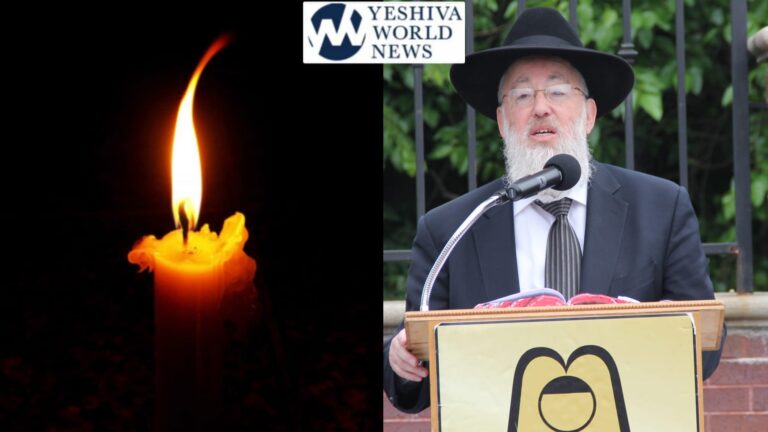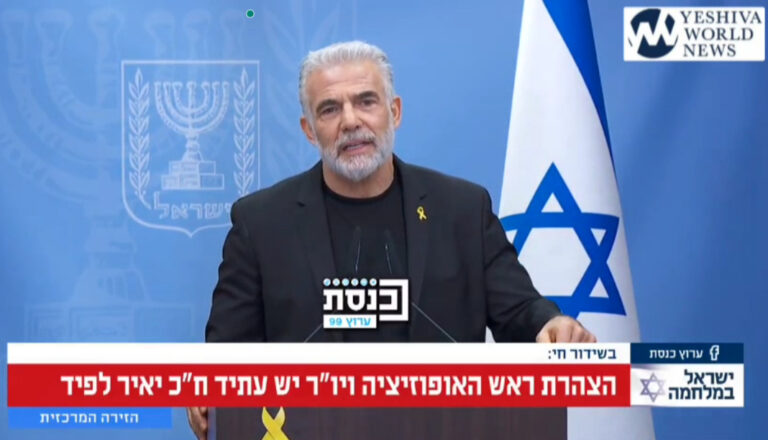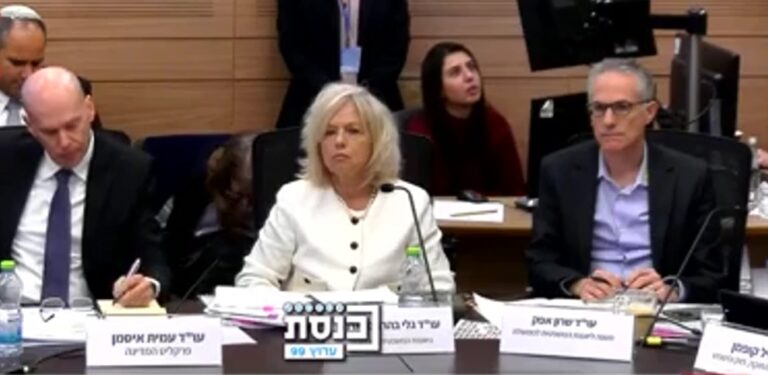 Solar energy pioneer Yaacov (Jack) Hanoka, who held patents for 56 of his inventions and was known for his passion and optimism in finding alternative energy sources to fossil fuels, passed away Sunday at the age of 75.
Solar energy pioneer Yaacov (Jack) Hanoka, who held patents for 56 of his inventions and was known for his passion and optimism in finding alternative energy sources to fossil fuels, passed away Sunday at the age of 75.
Hanoka, who held a Ph.D. in solid state physics, was a pioneer among modern scientists to delve into exploring the interplay between science and Torah. He occupied a leading role in founding the Chabad-Lubavitch weekend study programs that became popular among Jewish college students and professors in the early 1960s.
As chief technology officer of Evergreen Solar, Inc., Hanoka headed a successful effort to reduce the cost of harnessing the sun’s light in the creation of electricity.
Hanoka “was very inventive [and exhibited an] extraordinary level of energy,” said Emanuel Sachs, a professor of mechanical engineering at the Massachusetts Institute of Technology.
While he authored more than 70 publications in the field of solar energy, as a Chasidic Jew and scientist Hanoka devoted much of his time to Torah study and writing papers addressing apparent contradictions between Judaism and science. Among his efforts was explaining in scientific language the positive stance of the Rebbe, Rabbi Menachem M. Schneerson, of righteous memory, on reading the biblical story of creation literally.
The Rebbe “took a very unpopular stand on the age of the world,” Hanoka wrote in his last essay, a 56-page treatise entitled A Time for Everything: Thoughts on the Age of the World, published a month before his passing. Nevertheless, the Rebbe “was undeterred in standing his ground. From this I learned that if something is true, but very unpopular, I should not be afraid to advocate it.”
Many of his papers appeared in the scientific journal B’or Hatorah, including a critique of evolution and carbon dating entitled “Monkeying Around With Hominid Evolution and Torah, Science and Carbon 14.”
“Much of modern science tells us that the planet we inhabit is 4.5 billion years old,” he wrote, and that we “have ancestors who were animals such as monkeys.” However, “there are varying degrees of certainty regarding scientific ideas, [and] science is not a monolithic activity in a search for absolute truth of the world that we inhabit.”
He brought proof from the 20th century revelations of relativity and quantum theory, which overturned the classical view of the world.
“Physicists believed that they understood most of the basic principles that govern the physical world and that there were just a few puzzling things to be explained,” he explained. And along came new discoveries that challenged those principles.
He quoted famed Russian physicist Lev Landau, who said: “Cosmologists are often wrong but never in doubt.”
In the early 1950s, Chabad-Lubavitch rabbinical students began travelling to college campuses throughout the United States to give Torah classes and organize weekend programs for Jewish students.
At Pennsylvania State University in 1962, they encountered a free-thinking, spirited intellectual in Jack Hanoka. According to Rabbi Pini Baumgarten, whose father, Rabbi Berel Baumgarten, was a pioneer in such campus activities, Hanoka “was constantly challenging [the rabbinical students’] statements.”
The back-and-forth and the willingness on the part of his interlocutors to be challenged had a deep effect on Hanoka. At the end of the weekend, he escorted the visitors to the train station.
“I remember the Chasidic dancing in the train station,” he later recalled.
He turned to the rabbinical students and told them he wanted to visit the Jewish neighborhood surrounding Lubavitch World Headquarters in the Crown Heights section of Brooklyn, N.Y. The students arranged Hanoka’s trip and scheduled a private audience for him with the Rebbe.
“I had no prior Jewish knowledge,” Hanoka said in a 2006 interview, and “since that Shabbat, I was searching for my place in Judaism. I decided that I wanted to remain and study with the students in Brooklyn.”
Hanoka, who did not even know the Hebrew alphabet, told the Rebbe of his wish.
“I am sure you realize the great difficulty you will face while learning here,” the Rebbe said, referring to the fact that in 1962, there were no schools for beginners in Judaism.
Hanoka still wanted to remain and the Rebbe arranged for him to learn with a slew of students, each student for two hours. This way Hanoka would simultaneously learn the Hebrew alphabet, Talmud, Jewish law and Chasidic thought.
“In the beginning, I did not know what to expect,” said Hanoka. “What I knew was that I would need to make a great effort and invest myself into the learning process. What I knew was that there was a lot of deep scholarship there and I was greatly attracted to it.”
Several weeks after his arrival, at the Rebbe’s suggestion, he organized a project that brought college students and professors to Crown Heights for a weekend. The effort, which later became known as Encounter With Chabad, drew the attention of The New York Times.
“Students came from campuses in the United States and Canada to stay with followers of Rabbi Menachem M. Schneerson,” reported the paper, “observed the Sabbath, learned the meaning of the religious commandments and enjoyed [a Chasidic gathering] with Rabbi Schneerson.”
Over time, more weekend programs followed. Today, in addition to an annual Brooklyn weekend dedicated to Jewish college students, regional groups of campus Chabad Houses host their own similar events for thousands of students.
“Dr. Hanoka would choose topics that he felt would attract the most interest from the students,” said Rabbi Kasriel Kastel, program director of the Lubavitch Youth Organization. “He was intimately involved organizing all the events from [his home] in Boston for more than 30 years.”
“Intellectual curiosity brought me here,” Jeff Marx, a student at Washington University in S. Louis, told The Times. “I leave [here] intellectually and emotionally involved after my first experience with living Judaism.”
After a short few months of learning in Brooklyn, the Rebbe advised Hanoka to return to Penn State and complete his degree out of a respect for his parents.
“My grandfather was orphaned at a young age, forcing to leave school and supplement the family’s income,” said Hanoka’s son, Rabbi Yitzchak Hanoka. He “was aghast that [my father] now dropped college to pursue religious studies in Brooklyn.”
But the Rebbe also explained to Hanoka that his doctorate would enable him to have a greater influence on Jewish youth.
“The Rebbe told me I will do more for Judaism by having three initials after my name,” Hanoka recalled.
The Rebbe told Hanoka to be strong.
“You must feel like a pioneer. Every Jew whether they are aware of it or not, is an example for the world, so don’t feel bad about being an example,” the Rebbe said. “When you go to Penn State, act like yourself. Convey to the students your true feelings [and] don’t be afraid that it might distance them.”
Hanoka returned to school, and in 1964, married Polish Holocaust survivor Bina Herzberg in 1964.
In his free time, he continued to pursue his Jewish studies, and followed an intense learning schedule for the rest of his life.
In later private audiences, Hanoka would describe to the Rebbe his religious pursuits, including his time spent in contemplative prayer.
After addressing these points, the Rebbe would “inquire at length about his scientific studies,” said Yitzchak Hanoka.
“The Rebbe knew more about what I was studying,” Hanoka once told his son, “than I knew myself.”
Hanoka’s defining characteristic was his unfailing positive outlook on life; he viewed obstacles and difficulties as challenges to be overcome, not problems to be endured.
“I feel that this is what the Rebbe recognized in me from the beginning, therefore sending me on a most challenging journey,” he told his son.
“He had a sense of urgency, cherishing each moment to use it well,” recalled Rabbi Shmuel Lew of Lubavitch of the UK, a co-organizer of Encounter With Chabad in the 1960s. “He had a total dedication to what he knew was right, with a consistency that has stood the test of time over decades.”
His co-workers agreed.
He had, “unfailing energy, cheerfulness and enthusiasm,” said David Harvery, who worked with Hanoka at the Mobil Tyco Solar Energy Corp. He had an “extensive knowledge and eagerness to learn.”
“He had such energy, personal drive, creativity, dedication and love of life,” added Mark Farber, “to the extent that [the] company’s energy stemmed from one person. It was [him] who inspired others.”
“It was rare to find a man who can couple faith, optimism and pragmatic abilities,” said Richard Chleboski, who worked with Hanoka at Evergreen Solar.
Hanoka once announced at a board meeting that “everyone should walk around with two pieces of paper in their pockets. On one piece it should say: All I am is ashes and dust. And on the other: Everything in the universe G‑d created for me. The challenge for everyone is to hold these two disparate concepts in harmony.”
“Jack [was] an outstanding example of how to do this,” said Chleboski.
“He always had something nice to say to people,” said Peter Vandermeulen of 7Solar. “He added to the team, building the attitude and the fun working atmosphere to the company.”
“He believed in people,” said Sachs. “He treated every human being with respect. Those who worked for him sensed that and responded [positively] to it.”
(Source: Chabad.org)











One Response
A true Torah pioneer.Chaval al d’avdin v’lo mishtakchin.
His whole life was a kiddush Hashem